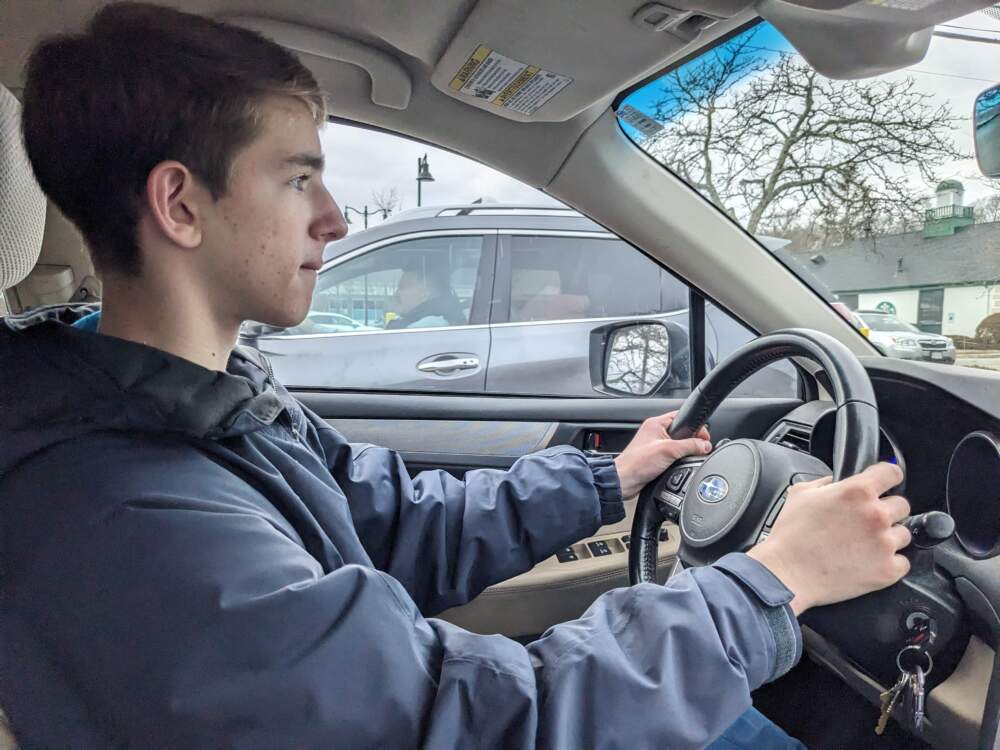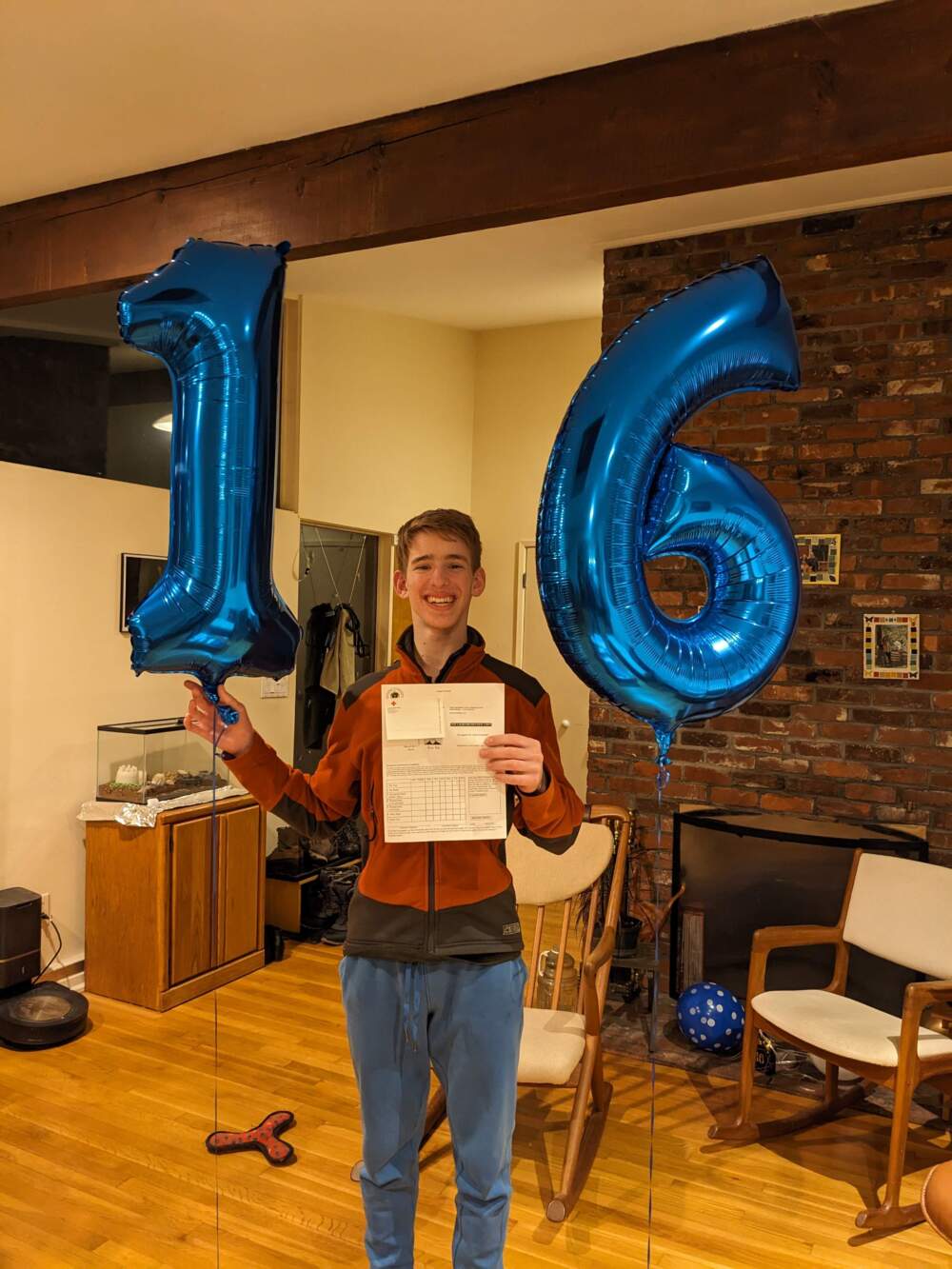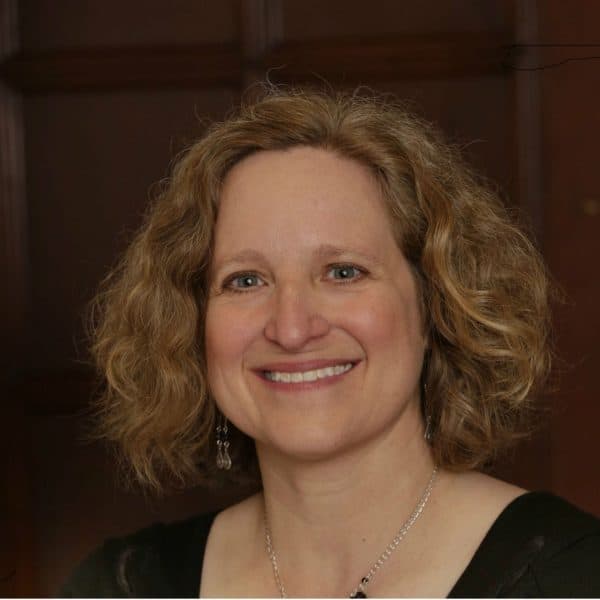Advertisement
Commentary
My brother died in a car accident decades ago. Now I’m teaching my son to drive

The first few years of my son Simon’s life, I meticulously photographed and documented every first: the first time he rolled over, smiled, sat up, sprouted a tooth, crawled, walked and called me “Mama.”
I filled three scrapbooks with the early years of those firsts. Then time sped up. I stopped making scrapbooks but kept taking photos of the firsts, his first day of kindergarten, middle school, high school. I cheered each first. Sometimes I also wept, in private, as I did after I walked him to our neighborhood school for his first day of kindergarten or after he boarded our town’s local bus for his first day of high school.
None of those firsts could prepare me for his latest milestone. In late January, he turned 16. My son was going to become a driver. I was thrilled. I was terrified.
The day after Simon’s birthday, I drove him to a AAA office so he could start the process of applying for a learner’s permit. That night, he logged on and took his learner’s permit test online. Less than 30 minutes later, I heard the printer whirring. He came downstairs, took his learner’s permit in his hands and grinned in a mixture of joy and awe.
“Congratulations!” I said.
“Watch out. Young driver alert,” he said, jokingly repeating the words I had scrawled on his birthday card.

I laughed, even though I felt a pang in my gut. Some of my terror stemmed from the normal fear of parents whose teenaged offspring approach driving age.
My trepidation was also fueled by the most traumatic loss of my life. My middle brother, Kevin, died at age 23 in a car accident on March 1, 1986. I was 21, in my last year of college. State troopers said Kevin apparently fell asleep at the wheel on a winding road in rural Utah. The accident report said he had failed to negotiate a curve, and his red Jeep rolled down a cliff. He had been on his way back home to Colorado after a week’s vacation in California.
Kevin was my best pal, and it took me three years to regain a semblance of normal after his death. I’ve never stopped flinching at the sound of a ringing phone at an unexpected hour. My parents had woken me up by phone on a Saturday morning to tell me Kevin had died. My biggest fear after losing Kevin was losing anyone else I loved.
Kevin’s death forever scarred my parents, my surviving older brother and me. From that very first moment I held Simon in my arms, I was determined not to pass on that scar to him.
There’s a time to hold our child’s hand, and there’s a time to let go. Risk-taking is a part of life. Learning to drive is a critical step toward my son becoming a self-reliant young man.
One of my favorite memories as a young driver was with Kevin. I was 18, and he, 20. We took a two-day road trip from our home in Ohio to Boston so I could begin a summer internship at “The Patriot Ledger” in Quincy. My car had no air conditioning so Kev and I rolled down the windows. We stuck in cassettes we had mixed ourselves into the tape deck, and sang at the top of our lungs with Styx on “Too Much Time On My Hands,” Michael Jackson on “Beat It” and with The Cars on “Shake It Up.” The wind whipped our thick hair. This was pure joy. This was freedom.
My son was going to become a driver. I was thrilled. I was terrified.
After Simon got his learner’s permit, my husband, Pavlik, took Simon out for his first time behind the wheel. I did parental session No. 2 on a clear Saturday afternoon in our Boston suburb.
Simon got into the driver’s seat of our Subaru Outback and moved it back to fit in his nearly 5-foot, 9-inch frame. He raised the mirrors and glanced down at me, and smiled. “You’re short,” he said.
I expected him to turn right out of the driveway, given our planned destination. He turned left. “I’m choosing to go this way,” he said.
A few minutes later, the wipers suddenly began swishing. There was no rain. “Huh,” Simon said, laughing. “Did I turn on the windshield wiper?”
“Yes,” I said, also laughing.
“How do I turn off the windshield wipers?” he asked.
He continued on, driving 20 mph in a 30 mph zone. A line of cars collected behind us. “That’s okay,” I said. “We have the thing on the back that says student driver. I’d rather you err on the side of caution.”
Simon’s middle name is Kevin, in memory of my brother. He knows about the uncle he has never met, an uncle who will remain forever 23, flashing his wide grin in photos on my bureau. He has heard the stories of his impish, daring uncle who was a waterski jumper in college. He has heard how Kevin died. Simon started driving lessons with a healthy sense of awareness, especially about the risks of driving while tired.
He knows about the uncle he has never met, an uncle who will remain forever 23, flashing his wide grin in photos on my bureau.
On his third lesson with me, Simon drove for about an hour, his longest drive so far. He entered the Route 2 rotary in Concord. “You forgot to look,” I said in a near shout. Thankfully, the car coming at us had slowed up when we entered.
About 10 minutes later, as he was merging onto the multi-laned I-495, Simon did not check his blind spot. An 18-wheeler changed lanes to avoid us.
“I didn’t see the truck,” he said, swearing at himself.
“You needed to check your mirror and the blind spot,” I said.
“Mom, you need to tell me that I have to remember to look before I merge,” he said, his voice tense.
“OK,” I said, trying to sound calm. A few days prior, I had asked Google for advice for parents of new teen drivers. “Keep cool,” was a top tip.
A few minutes later, Simon exited the highway and approached a stop sign. “Don’t forget to not jerk when you stop and then to pull up all the way so you can really see,” I said.
“Mom,” he pleaded, “stop being a backseat driver.”
I understood exactly what he was saying: “Mom, I got this.” But he had only been driving for a few days. For the next six months, sitting next to him in the passenger seat, I'll hold onto his hand — figuratively — a little longer.
